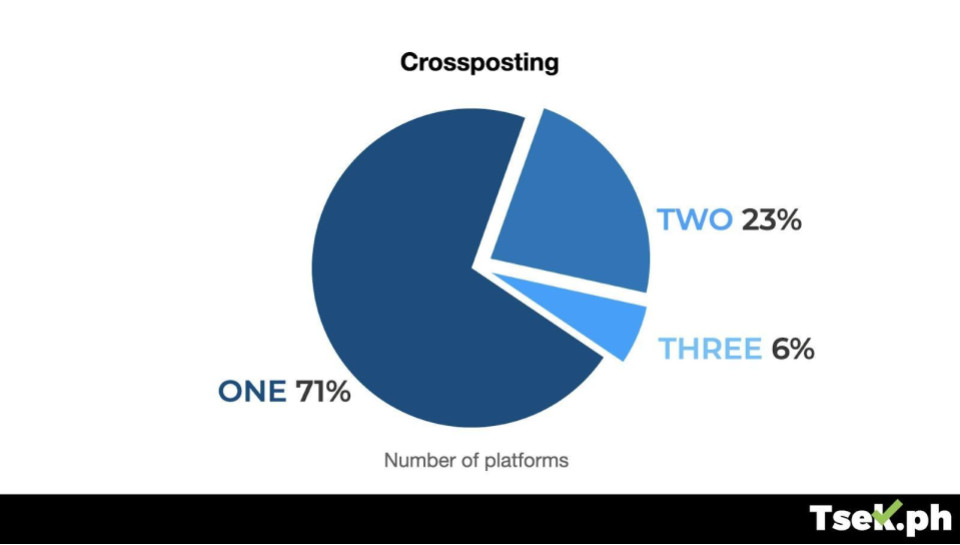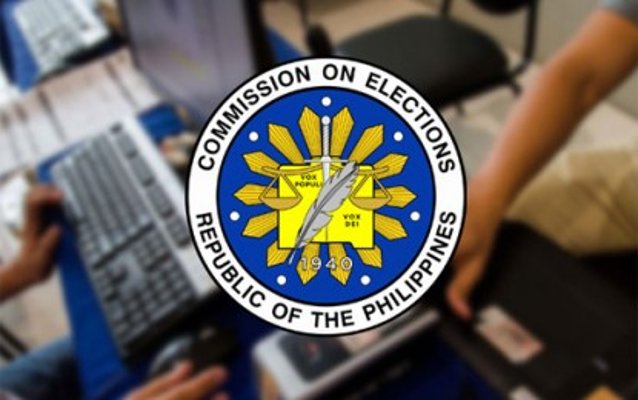Filipino voters head to the polls on Monday after months of being engulfed in a relentless and widening stream of falsehoods spewed out in multiple formats and platforms that is unprecedented in the country’s history.
Tsek.ph’s second and latest analysis has tracked a high volume of multipronged and multiplatform attacks on selected targets using traditional media and communities of sharers on social media to circulate posts and false narratives.
It closely resembles what U.S.-based think tank Rand Corp. calls the “firehose of falsehood” strategy that is marked by “high numbers of channels and messages and a shameless willingness to disseminate partial truths or outright fictions.”
The strategy is also characterized by an outpouring of rapid, repetitive and indiscriminate topics coming from a volume of sources. Tsek.Ph partners noted that they have many times encountered the same false claims that have previously fact-checked, even long before the election season opened.
Tsek.ph is a collaborative fact-checking initiative of 34 partners from academe, media and civil society for the May 9 elections. It is supported by the University of the Philippines, Google News Initiative, Rakuten Viber, Meta, Meedan and the Embassy of Canada.
Tsek.ph’s first analysis released on Feb. 25 covered around 200 fact checks published from November 2021 to early February, shortly before the campaign period kicked off on Feb. 8. The second analysis covers 685 fact checks published until the end of April, or nine days before the elections.
The firehose strategy of disinformation, which was already observed beginning February, is even more pronounced in the succeeding weeks as if disinformation operations were on a last-ditch effort before election day.
Most Targeted Candidates
Leni Robredo and Ferdinand Marcos Jr. remain the primary targets of disinformation in the presidential race as are their running mates Francis Pangilinan and Sara Duterte in the vice presidential contest. The focus on the two tandems is significant because it reflects high political polarization.

What is even more significant is how supporters of the Marcos-Duterte tandem have succeeded in further boosting narratives in their favor through an increase in the volume of negative messages against Robredo.
As of April 30, 92% of fact checks about Marcos were false or misleading information in his favor. The proportion of debunked false claims praising Duterte was even higher at 95%. On the other hand, 96% of disinformation targeting Robredo was negative. Pangilinan consistently received negative messaging among the fact-checked claims since November.
Negative messaging refers to claims that malign their targets while positive messaging denotes claims praising their targets. Both positive and negative messaging convey sentiments ranging from approval, support, contempt and ridicule, to attempts to deny and justify wrongdoing.


The issues on competence and character were mainly raised against Robredo and hardly against Marcos. For example, Robredo’s relief assistance for typhoon victims, her anti-poverty project, and her stint as public interest lawyer were derided. She was also accused of bribing people to attend her rallies.
Marcos, meanwhile, received credit for things he had little or nothing to do with, including bills and laws, while incredulous claims padded his personal and political performance.
Targeting Institutions
An array of false claims have targeted noncandidates and institutions associated with the candidates. For example, the late dictator Ferdinand Marcos Sr., his widow Imelda and daughter Imee were featured overwhelmingly in a positive light. Three-fourths of the claims intended for President Rodrigo Duterte were also positive. Mention of these noncandidates was intended to boost the Marcos-Duterte tandem as they are supposed to bask on their fathers’ achievements and legacies.
The negative messaging that the media received partly stemmed from complaints of Marcos Jr.’s camp that their sorties were either ignored or not wholly reported by the media. The fact checks on the Commission on Elections were the claims about possible cheating and poll irregularities, some of which were blamed on Robredo, even without basis. The claims obviously came from the camp of Marcos, as they often recalled his defeat in the vice presidential race in 2016.
The fact checks since February saw the proliferation of information that tends to sow confusion in the conduct of voting which could undermine the results of the election. These claims include a scenario of chaos with a Robredo victory. The false claims against the Comelec in the 2016 election and the foregoing scenario in Monday’s elections unite around the theme of stolen elections, which Marcos Jr. and his supporters have been spouting on social media.
The Catholic Church, whose bishops, clergy and lay organizations have endorsed Robredo and Pangilinan, may have been less targeted than the media, but the messaging was entirely negative. However, other religious organizations that support Marcos and Duterte were mostly spared from disinformation attacks.
The inclusion of Comelec, media and the Catholic Church as targets of disinformation is telling. If the public has little confidence in these institutions, the electoral process would be less credible because these institutions play crucial roles on election day.
The attacks on the Aquino family also remain unabated. A TikTok video slammed the decision of Marcos’ successor, President Corazon Aquino, to mothball the Bataan Nuclear Power Plant as a case of putting politics first before the country’s welfare. The truth, however, is that Aquino decided against the operation of the nuclear power plant for public health and safety reasons as well as the fraud and corruption charges that plagued the project.
The accomplishments of Aquino and her son, President Benigno Aquino III, were also downplayed. Critics accused them of only erecting monuments in their supposed combined term of more than 30 years. However, the Aquinos, who separately served six years each as president, have had many economic accomplishments. By discrediting the Aquinos, the false claims try to project the dictator Marcos and his son as the better leaders.


Crowd Sizes and Endorsements
The crowd-drawing capacity of Robredo-Pangilinan in their rallies has been subject to disinformation. The claims doubted the credibility of crowd estimates of the rallies, which often run into tens of thousands and presented through aerial drone shots. Supporters of Marcos and Duterte were skeptical about the reliability of drone photography whereas supporters of Robredo and Pangilinan embraced the technology that shows the growth of their grassroots backers.
Endorsements are among the political tactics to win over votes and they involve celebrities, political figures, powerful groups and pop culture icons. Endorsements are meant to create public opinion and media events.
However, this show of support for candidates became a source of disinformation. For example, claims that American pop star Beyonce and K-Pop BTS and supporting Marcos were tagged false. So were claims of support for Marcos Jr. from President Duterte, Mar Roxas and Robredo. A newspaper also inaccurately reported that 90% of governors support Marcos.
Red-tagging/Red-baiting
Red-tagging is a form of disinformation that alleges a connection between some candidates and the clandestine Communist Party of the Philippines – New People’s Army (CPP-NPA) that is fighting the government for more than fifty years. While unfounded, red-baiting continues to be an issue against Robredo and Pangilinan.
Claims that Robredo and Pangilinan were advised by CPP-NPA founder Jose Maria Sison and that Robredo’s daughter Aika and Pangilinan’s wife, Sharon Cuneta, confirmed such connection were among those debunked by fact checkers.
Robredo has challenged the red-baiting tactics at the time when her sorties and rallies were drawing huge crowds and had benefited from endorsements from various political groups, including those that were also red-tagged.
Red-tagging the Robredo-Pangilinan tandem is meant to demonize their group by presenting them as undesirable and evil. The demonization could widen political polarization and prevent the undecided voters from considering the tandem because they are falsely associated with the insurgents.
Many of the visual forms of red-tagging were not subjected to fact checks because they offer conjectures and expressed resentment, which are framed to outwit verification.
Agents of Disinformation
The sources and agents of claims that were fact-checked as either disinformation (false information intended to cause harm) and misinformation (erroneous and inaccurate information) are most social media users with partisan views. Candidates contributed 12% percent of the total claims in the form of statements given at debates, press conferences, rallies and other public gatherings.

Facebook is the primary platform used for political campaigning, but at the same time it is also where most false claims are conspicuously found. However, disinformation over Facebook is interlinked with those of other social media platforms. This means that Facebook either functions as the source or a repeater of inaccurate claims.
TikTok, a younger platform, now plays a crucial role in pushing false or misleading election-related claims. In Tsek.ph’s February analysis, only 7% of the fact-checked claims came from the video-sharing app. Its share has climbed to 13% in the latest analysis and is tied in second spot with YouTube after Facebook.
Crossposting has also risen, with 29% of fact-checked claims now appearing in two or more platforms.


The ease with which false or misleading claims can range the social media platforms has helped increase the audience’s chances of encountering disinformation, especially so when many of the claims were repeated claims or variations of the same. The repeated false claims continue to elicit interaction from social media users because either they support such views or their familiarity with those views led to their eventual acceptance.
Photos are still the most popular forms of political messaging on social media (42% of fact-checked claims), but claims contained in video have grown and account for 40% in the latest analysis compared to 32% in February.

Coordinated Behavior
Agents of disinformation do not operate in relative isolation. They attract people to join networks of disinformation that function as spreaders of large volume of false content.
Coordinated behavior was observed in the number of groups that share a single false claim, giving the impression that the claim has multiple sources. This would make the claim appear believable because of the sheer interest conveyed by various sources.
Available data show that three in five fact-checked claims circulated in more than 50 Facebook pages and groups. A big majority (84%) of the claims generated total interactions (likes, shares, comments) exceeding 1,000.
For example, a video of a priest’s homily spliced together with clips of Marcos Jr.’s campaign rallies to make it seem he was speaking in favor of the former senator elicited more than 5.1 million interactions, making it among the top five claims with the most interactions.

Among the rampant claims that were fact-checked were those that insinuate that Marcos Jr. might lose again by cheating. His supporters have echoed his statement that he lost to Robredo in 2016 because he was cheated despite a Supreme Court ruling dismissing his allegation.
Up to the eve of the elections, the claim of a repeat of the 2016 election cheating circulates on social media, suggesting that the certainty of Marcos’ victory could be thwarted by electoral fraud blamed on Robredo. The insinuation of poll irregularities could cast doubts on the integrity of Comelec and the electoral system. – Yvonne T. Chua, Maria Diosa Labiste and Felipe Jose Gonzales (Infographics by Felipe Jose Gonzales)




